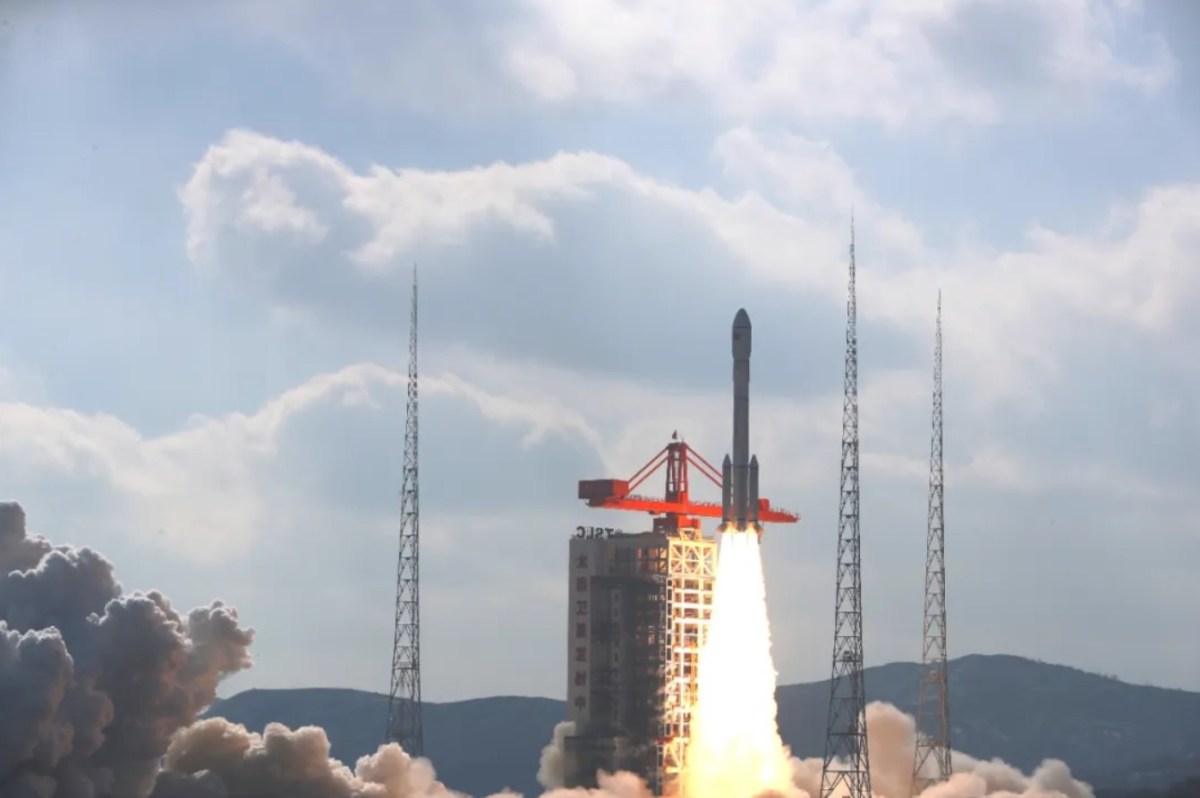HELSINKI — China launched the third batch of 18 satellites for the Thousand Sails constellation late Tuesday as the firm behind the project aims for global services in 2025.
A Long March 6A rocket lifted off at 11:41 p.m. Eastern, Dec. 4 (0441 UTC, Dec. 5) from Taiyuan Satellite Launch Center, north China. The state-owned Shanghai Academy of Spaceflight Technology (SAST) announced launch success hours later, once all payloads were deployed into their predetermined polar orbits.
Aboard were 18 flat panel satellites for the Thousand Sails megaconstellation to provide low Earth orbit communications services. The project is led by Shanghai Spacecom Satellite Technology (SSST). The project is sometimes also referred to as Qianfan and G60 Starlink. The launch followed earlier Thousand Sails/Qianfan constellation satellite launches in August and October this year.
The satellites were developed by the Shanghai Microsatellite Engineering Center and are the first generation of Thousand Sails satellites.
Spacesail aims to construct a 14,000-satellite constellation, with the aim of having around 600 satellites in orbit by the end of 2025. SSST has garnered substantial support, securing approximately $943 million in funding in early 2024.
The company recently reached an agreement with Brazil, which will see Spacesail begin providing services to the county in 2026. The move follows a dispute between Brazil and the X social media platform owned by Elon Musk. The issue saw Brazil’s Supreme Court temporarily freeze the bank accounts of Starlink in the country.
The Long March 6A, developed by SAST, is the first and so far only Chinese launcher to bundle a liquid propellant core stage with solid propellant side boosters. It is capable of launching 4,500 kilograms of payload to a 700-kilometer sun-synchronous orbit
The rocket has, despite successful launches, suffered issues with its upper stage fragmenting. The launch which carried the first 18 Qianfan satellites broke up into a cloud suspected to number more than 700 pieces of orbital debris. SAST has so far not responded to requests for comment. The 36 previously launched satellites have all been cataloged in polar orbits by U.S. Space Force space domain awareness.
There are also concerns over the apparent brightness of the Qianfan satellites and their potential impact on astronomy.
The launch was China’s 62nd orbital launch attempt of 2024. It is China’s fifth launch since November 27, when the first enhanced Zhuque-2 rocket lifted off from Jiuquan, northwest China. This was followed by two experimental satellites on the first Long March 12, the launch of likely early warning satellite TJS-13 on the 100th Long March 3B, and the launch of the first enhanced Kuaizhou-1A solid rocket from Xichang.
China’s national record for launch attempts in a calendar year is 67, set in 2023. The country had stated plans to launch around 100 times across 2024.
— Edited at 6:18 p.m. Eastern, Dec. 5, to correct note on cataloging of Qianfan satellites in orbit.
